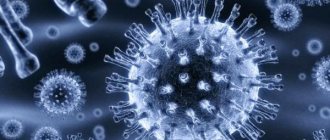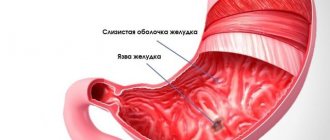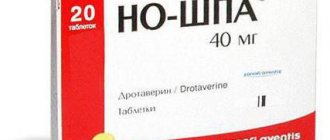Esophagitis
Pain in the esophagus when swallowing, or, as this condition is called in medicine, dysphagia, is a consequence of esophagitis, an inflammatory pathology that affects the mucous membrane of the esophagus. The disease can occur in acute, chronic, catarrhal, erosive, hemorrhagic, necrotic and pseudomembranous forms.
© shutterstock
Experts have identified a number of factors that cause esophagitis:
- Irritation from hot or cold food;
- Alcohol abuse;
- Acid, alkaline burns;
- Probing;
- Prolonged vomiting;
- Infectious lesions;
- Allergy to certain foods;
- Severe intoxication.
Signs of illness
The initial stage of the disease does not show obvious symptoms. A person occasionally experiences slight discomfort in the esophagus during swallowing.
When the disease becomes acute, esophagitis is expressed:
- Burning pain that radiates to the back, sometimes to the neck;
- Increased salivation;
- Swallowing disorder;
- Bloody vomiting.
If you experience pain in the esophagus when swallowing and other symptoms appear, you should go to the hospital to avoid unforeseen consequences.
The chronic form of the disease manifests itself:
- Heartburn;
- Burning behind the sternum;
- Belching with an unpleasant aftertaste;
- Difficulty breathing;
- Bronchial asthma;
- Mild pain in the esophagus when swallowing.
Treatment options
Depending on the form of esophagitis, the patient is prescribed inpatient or outpatient treatment, including:
- Special diet;
- Antacids;
- Medicines that relieve heartburn;
- Agents that neutralize excess stomach acid.
In severe cases, doctors resort to surgery.
Why does the esophagus hurt when swallowing?
Pain when swallowing in the esophagus indicates impaired functioning of the gastrointestinal tract, which entails a lot of other symptoms and discomfort.
When a person is experiencing pain when swallowing in the esophagus, in no case should you self-medicate; you should immediately go for a consultation to a hospital, where qualified specialists can identify and eliminate the true cause of the pain.
Esophagitis
Pain in the esophagus when swallowing, or, as this condition is called in medicine, dysphagia, is a consequence of esophagitis, an inflammatory pathology that affects the mucous membrane of the esophagus. The disease can occur in acute, chronic, catarrhal, erosive, hemorrhagic, necrotic and pseudomembranous forms.
© shutterstock
Experts have identified a number of factors that cause esophagitis:
- Irritation from hot or cold food;
- Alcohol abuse;
- Acid, alkaline burns;
- Probing;
- Prolonged vomiting;
- Infectious lesions;
- Allergy to certain foods;
- Severe intoxication.
Signs of illness
The initial stage of the disease does not show obvious symptoms. A person occasionally experiences slight discomfort in the esophagus during swallowing.
When the disease becomes acute, esophagitis is expressed:
- Burning pain that radiates to the back, sometimes to the neck;
- Increased salivation;
- Swallowing disorder;
- Bloody vomiting.
If you experience pain in the esophagus when swallowing and other symptoms appear, you should go to the hospital to avoid unforeseen consequences.
The chronic form of the disease manifests itself:
- Heartburn;
- Burning behind the sternum;
- Belching with an unpleasant aftertaste;
- Difficulty breathing;
- Bronchial asthma;
- Mild pain in the esophagus when swallowing.
Treatment options
Depending on the form of esophagitis, the patient is prescribed inpatient or outpatient treatment, including:
- Special diet;
- Antacids;
- Medicines that relieve heartburn;
- Agents that neutralize excess stomach acid.
In severe cases, doctors resort to surgery.
GERD
Esophageal pain after swallowing is caused by gastroesophageal reflux disease. The disease provokes the release of stomach acid into the esophagus, which is not adapted to such aggressive chemical influences. The walls of the organ begin to become inflamed, ulcers form on them, which causes excruciating pain when swallowing.
© shutterstock
Among the causes of GERD are::
- Improper diet;
- Problems with excess weight;
- Poor gastric motility;
- Problematic saliva production;
- Regular stressful situations;
- Excessive loads;
- Stomach pathologies.
Signs of illness
It is simply impossible not to notice the symptoms of the disease. GERD manifests itself :
- Pain in the esophagus, larynx and chest after swallowing;
- Constant heartburn;
- Unpleasant belching;
- Cardiac arrhythmia;
- Asthmatic attacks;
- Cough;
- Burning stomach.
This disease is a very dangerous disease, so at the first sign of symptoms you should immediately go to the hospital.
Treatment options
To get rid of pain when passing food caused by GERD, an individual treatment program is necessary. It is prescribed by specialists based on the diagnostic results obtained.
Therapeutic methods include:
- Special diet;
- Physiotherapeutic procedures;
- Antacids;
- Prokinetics.
For effective recovery, a person must give up bad habits and lead a healthy lifestyle.
In severe cases, when bleeding occurs or the lumen of the esophagus narrows, doctors perform surgery.
Achalasia cardia
Another cause of pain in the esophagus when swallowing food is achalasia cardia - impaired motility of the esophagus. To be more precise, the disease is a poor reflex opening of the opening between the esophagus and the stomach, as a result of which complete swallowing does not occur.
© shutterstock
Often, achalasia cardia is diagnosed in people over 20 years of age. Unfortunately, to this day scientists have not been able to figure out the causes of the disease.
Signs of achalasia cardia
The main signs of the disease include:
- Impaired swallowing;
- Retention of food in the esophagus;
- Vomit;
- Painful sensations behind the sternum;
- Difficulty breathing;
- Suffocation;
- Cough;
- Significant weight loss.
Initially, difficulty swallowing occurs periodically, resulting from severe stress or hasty eating. But over time, the pain becomes regular, preventing a person from drinking even liquids. Esophageal vomiting is becoming more common, making life unbearable.
Due to the danger of the disease, doctors recommend seeking medical help when the esophagus hurts when swallowing.
Treatment options
Treatment of achalasia cardia consists of three methods:
- Balloon dilatation;
- Botulinum toxin injections;
- Surgical myotomy.
Doctors also recommend avoiding psychological stress, giving up physical activity and unhealthy diet, because a healthy lifestyle is the key to happiness.
Dermatomyositis
Pain in the stomach when swallowing food is caused by dermatomyositis, an inflammation of the connective tissues. The disease can occur as an independent disease, or as a consequence of tumor neoplasms.
© shutterstock
Experts have identified some factors contributing to the development of dermatomyositis, including:
- Hereditary predisposition;
- Infectious lesions;
- Various injuries;
- Psychological stress;
- Frequent hypothermia;
- Allergic reactions.
Signs of illness
This disease has similar symptoms to other diseases, so you should promptly seek advice from medical institutions.
Dermatomyositis manifests itself:
- Pain in the esophagus and stomach when swallowing;
- Poor passage of food;
- Decreased appetite;
- Peculiar abdominal pain.
Treatment options
Before starting treatment, the patient will have to undergo a number of procedures, including medical history, biochemical and immunological studies, electromyography, magnetic resonance imaging, biopsy, etc.
Treatment of dermatomyositis is a complex process, which is based on:
- Glucocorticosteroid hormones;
- Cytostatics;
- Immunoglobulin injections;
- Plasmapheresis;
- Vitamin complex.
If dermatomyositis is diagnosed as a secondary disease, therapy will consist of treating the primary disease.
Esophageal carcinoma
Pain occurs when swallowing in the esophagus due to a malignant neoplasm. Cancer is the eighth most common cancer, affecting women and men equally.
© shutterstock
Among the most common types of the disease are squamous cell carcinoma, which arises from the epithelial cells of the mucous membrane, and adenocarcinoma, which develops from the glands of the organ.
Doctors have identified several factors contributing to the development of esophageal cancer:
- Vitamin deficiency;
- Chronic diseases of the organ;
- Tobacco smoking;
- Alcohol abuse;
- Various internal burns.
Signs of illness
The main sign of a tumor is pain in the esophagus during swallowing. At first it is difficult for a person to swallow solid food, but over time it becomes painful to take a sip of water.
The disease also manifests itself:
- Pain in the central part of the chest;
- Vomiting, sometimes mixed with blood;
- Hoarseness of voice;
- Weight loss;
- Black feces.
Treatment options
Small tumors are removed surgically. This is followed by chemotherapy and radiation therapy.
In advanced stages, a stent is installed in the patient - a special tube that allows food to pass through, the esophagus is dilated using bougienage, and radiation therapy is prescribed.
Chemical burn
In the throat and esophagus, pain may indicate a chemical burn, which occurs due to neglect or loss of self-control.
© shutterstock
Signs of illness
With a chemical burn, not only the esophagus hurts when swallowing, but also the sternum, stomach, shoulder blades, collarbone, and neck. It all depends on the degree and form of the lesion.
Among the auxiliary signs are:
- Visual changes;
- Hoarse voice;
- Swelling of the mucous membranes;
- Shortness of breath;
- Vomiting;
- Intestinal spasms.
If the burn is caused by caustic substances, fistulas will form, which will lead to general malaise or loss of consciousness.
Treatment options
To eliminate pain when swallowing caused by a burn, therapeutic procedures are performed, including:
- Washing;
- Drugs that relieve spasms;
- Medicines to relieve shock;
- Antibiotics;
- Hormonal.
Doctors treating pain when swallowing in the esophagus
When the esophagus hurts during swallowing, you need to seek help from a gastroenterologist, since it is this doctor who treats diseases of the esophagus and gastrointestinal tract.
In severe forms of the disease, consultation with a surgeon is often required.
© shutterstock
Less popular causes of pain when swallowing in the esophagus
In addition to the above ailments, there are other causes of pain in the esophagus when swallowing:
- Organ diverticula;
- Scleroderma;
- Lupus erythematosus;
- Portal hypertension;
- Entry of a foreign body;
- All kinds of injuries;
- Tumor of the oropharynx;
- Paralysis;
- Angina;
- Quincke's edema.
GERD
Esophageal pain after swallowing is caused by gastroesophageal reflux disease. The disease provokes the release of stomach acid into the esophagus, which is not adapted to such aggressive chemical influences. The walls of the organ begin to become inflamed, ulcers form on them, which causes excruciating pain when swallowing.
© shutterstock
Among the causes of GERD are::
- Improper diet;
- Problems with excess weight;
- Poor gastric motility;
- Problematic saliva production;
- Regular stressful situations;
- Excessive loads;
- Stomach pathologies.
Signs of illness
It is simply impossible not to notice the symptoms of the disease. GERD manifests itself :
- Pain in the esophagus, larynx and chest after swallowing;
- Constant heartburn;
- Unpleasant belching;
- Cardiac arrhythmia;
- Asthmatic attacks;
- Cough;
- Burning stomach.
This disease is a very dangerous disease, so at the first sign of symptoms you should immediately go to the hospital.
Treatment options
To get rid of pain when passing food caused by GERD, an individual treatment program is necessary. It is prescribed by specialists based on the diagnostic results obtained.
Therapeutic methods include:
- Special diet;
- Physiotherapeutic procedures;
- Antacids;
- Prokinetics.
For effective recovery, a person must give up bad habits and lead a healthy lifestyle.
In severe cases, when bleeding occurs or the lumen of the esophagus narrows, doctors perform surgery.
Diagnosis and treatment of esophageal spasm
It is necessary to differentiate (distinguish) the condition of spasm of the esophageal muscles from an attack of angina . Chest pain is an unreliable sign. With this symptom, the suspicion of heart disease increases if the patient is over 50 years old, and the pain subsides after the nitroglycerin is absorbed. The fact is that nitroglycerin helps well in both cases, relieving both an attack of esophagospasm and the pain of angina pectoris. To exclude the diagnosis of angina, a heart examination is performed based on electrocardiography.
With spasm of the esophagus, pain manifests itself mainly during the swallowing of water or food, and this symptom is important for making a diagnosis if other research methods are unavailable or uninformative.
Special studies are carried out to find out whether signs of spasms are a consequence of stomach cancer, achalasia, gastroesophageal reflux disease, neurological problems in which the muscles of the esophagus and its sphincter function abnormally.
Spasm of the esophageal tube is visible on radiography with a contrast suspension
To confirm the diagnosis of esophagospasm, patients undergo examination by a gastroenterologist, undergo an X-ray examination, and fiberoscopy. When diagnosing esophageal spasm, fluoroscopy using a contrast agent reveals spasm in certain areas where barium suspension is retained. It is often observed that the spasmodic or narrowed area takes on the shape of a funnel.
To cure esophageal spasm, you must:
- make the correct diagnosis;
- detect the root cause (the underlying disease) that provoked the spasm;
- liquidate it.
Drug treatment
Complex therapy is used, aimed at simultaneously eliminating all the symptoms that arise from spasms of the esophagus.
| A drug | Goals and objectives of the reception | How to use |
| Ranitidine Omez Famotidine Creon Omeprazole | decreased gastric acidity | orally |
| Motilium Metoclopramide Cisapride | increased contraction of the lower esophageal sphincter and decreased gastric emptying time | orally |
| Cerucal No-shpa Atropine sulfate | relieving cramps, nausea, vomiting | orally |
| Gastal Almagel Rennie Ranitidine Simethicone Omeprazole | protection of the mucous membrane from ulceration, neutralization of the action of acid and enveloping effect on the cavity of the esophagus and stomach. | orally |
| Nitroglycerin and its derivatives | rapid antispasmodic effect (with mandatory monitoring of blood pressure) | orally |
| Atropine preparations* | urgent care for intense pain and spasms of the esophagus | orally in drops, parenterally (subcutaneously) |
| Sustak Nitrolong Nitrong | pronounced antispasmodic effect | orally |
| Belladonna extract Bellasthesin Bellataminal Belloid Bellaspon | relief of moderate symptoms | orally |
| Baralgin Papaverine Spasmolitin Spazgan Aprofen | relieving spasms | parenterally (intramuscular or subcutaneous); orally |
| Novopassit Sodium bromide Valoserdin Bromcamphor | calming for neurospastic form of esophagospasm, relieving neurosis | orally |
| Azafen Sibazon Paxil | antidepressants | orally |
| Meprobamate Trioxazine Relanium | tranquilizers | orally; parenterally |
| Donormil | normalization of sleep | orally |
| B vitamins (B1, B6, B5, B12) Milgamma | complex of vitamins to strengthen the nervous system | orally; parenterally (intramuscular) |
| Lidocaine spray Anestezin | local anesthetics | orally |
Achalasia cardia
Another cause of pain in the esophagus when swallowing food is achalasia cardia - impaired motility of the esophagus. To be more precise, the disease is a poor reflex opening of the opening between the esophagus and the stomach, as a result of which complete swallowing does not occur.
© shutterstock
Often, achalasia cardia is diagnosed in people over 20 years of age. Unfortunately, to this day scientists have not been able to figure out the causes of the disease.
Signs of achalasia cardia
The main signs of the disease include:
- Impaired swallowing;
- Retention of food in the esophagus;
- Vomit;
- Painful sensations behind the sternum;
- Difficulty breathing;
- Suffocation;
- Cough;
- Significant weight loss.
Initially, difficulty swallowing occurs periodically, resulting from severe stress or hasty eating. But over time, the pain becomes regular, preventing a person from drinking even liquids. Esophageal vomiting is becoming more common, making life unbearable.
Due to the danger of the disease, doctors recommend seeking medical help when the esophagus hurts when swallowing.
Treatment options
Treatment of achalasia cardia consists of three methods:
- Balloon dilatation;
- Botulinum toxin injections;
- Surgical myotomy.
Doctors also recommend avoiding psychological stress, giving up physical activity and unhealthy diet, because a healthy lifestyle is the key to happiness.
Preventive measures
The most important rules of prevention that will help avoid painful sensations in the esophagus when swallowing are the following medical recommendations:
- Timely treatment of diseases of the digestive tract, contacting a doctor if suspicious symptoms occur.
- Be careful when working and storing alkalis, acids and other hazardous substances, household chemicals.
- Compliance with proper nutrition, food intake and temperature conditions, food and drinks consumed.
- Be careful when working with small objects and never hold them with your teeth.
Compliance with these rules is extremely important for maintaining human health.
Dermatomyositis
Pain in the stomach when swallowing food is caused by dermatomyositis, an inflammation of the connective tissues. The disease can occur as an independent disease, or as a consequence of tumor neoplasms.
© shutterstock
Experts have identified some factors contributing to the development of dermatomyositis, including:
- Hereditary predisposition;
- Infectious lesions;
- Various injuries;
- Psychological stress;
- Frequent hypothermia;
- Allergic reactions.
Signs of illness
This disease has similar symptoms to other diseases, so you should promptly seek advice from medical institutions.
Dermatomyositis manifests itself:
- Pain in the esophagus and stomach when swallowing;
- Poor passage of food;
- Decreased appetite;
- Peculiar abdominal pain.
Treatment options
Before starting treatment, the patient will have to undergo a number of procedures, including medical history, biochemical and immunological studies, electromyography, magnetic resonance imaging, biopsy, etc.
Treatment of dermatomyositis is a complex process, which is based on:
- Glucocorticosteroid hormones;
- Cytostatics;
- Immunoglobulin injections;
- Plasmapheresis;
- Vitamin complex.
If dermatomyositis is diagnosed as a secondary disease, therapy will consist of treating the primary disease.
Esophageal carcinoma
Pain occurs when swallowing in the esophagus due to a malignant neoplasm. Cancer is the eighth most common cancer, affecting women and men equally.
© shutterstock
Among the most common types of the disease are squamous cell carcinoma, which arises from the epithelial cells of the mucous membrane, and adenocarcinoma, which develops from the glands of the organ.
Doctors have identified several factors contributing to the development of esophageal cancer:
- Vitamin deficiency;
- Chronic diseases of the organ;
- Tobacco smoking;
- Alcohol abuse;
- Various internal burns.
Signs of illness
The main sign of a tumor is pain in the esophagus during swallowing. At first it is difficult for a person to swallow solid food, but over time it becomes painful to take a sip of water.
The disease also manifests itself:
- Pain in the central part of the chest;
- Vomiting, sometimes mixed with blood;
- Hoarseness of voice;
- Weight loss;
- Black feces.
Treatment options
Small tumors are removed surgically. This is followed by chemotherapy and radiation therapy.
In advanced stages, a stent is installed in the patient - a special tube that allows food to pass through, the esophagus is dilated using bougienage, and radiation therapy is prescribed.
Causes
The human esophagus consists of mucous, submucosal, muscular and adventitial membranes. Injury or dysfunction of one of these structures can cause severe pain, nausea and other unpleasant symptoms. Gastroenterologists identify 7 main factors that can lead to pain.
Reflux esophagitis
Pain may occur due to the patient having reflux esophagitis. This is an inflammatory process that is caused by the action of gastric juice on the mucous membrane of the esophageal tube. This problem arises in patients suffering from gastroesophageal reflux and functional disorders of the digestive system. In this case, the esophagus can hurt even at rest.
Important: Patients may also experience additional symptoms, which should definitely be taken into account. A person may suffer from heartburn, dysphagia and other signs of inflammation.
Peptic esophagitis
This disease causes pain even when swallowing liquids, soft foods and saliva. The nature of the pain syndrome and its intensification can be affected by the food taken and the position of the patient’s body. The pain is very persistent and is localized in the retrosternal region or in the area of the xiphoid process. Pain can radiate to other parts of the body:
- back;
- neck;
- upper part of the esophageal tube;
- rib cage;
- interscapular region;
- collarbone;
- jaw and more.
Important: The sensations are often confused with coronary pain. The difference is that pain in the esophagus with peptic esophagitis does not depend on physical activity and tension. Checking for heart pain is very simple. If after using nitroglycerin the pain in the esophagus does not subside, then the cause is another disorder.
Foreign bodies in the esophagus
In some cases, cartilage and bones of poultry and fish get stuck inside the esophagus. Also, quite often, surgeons have to remove coins, needles, nails, pins, buttons, paper clips and other small objects that have gotten inside from the esophagus.
If there is a foreign body inside, the patient experiences increased salivation, and pain in the chest area intensifies when swallowing saliva or liquid. The patient may feel a lump that creates discomfort in a certain part of the esophagus. Over time, symptoms such as fever, dysphagia, deterioration of the patient’s health and condition, and even purulent mediastinitis may occur.
Important: Over time, a foreign body can lead to complications, regardless of how long ago the object entered the esophagus and how long it remains motionless in it.
Burns
Burns of the esophagus occur in two cases. In the first, the cause is the accidental ingestion of caustic chemicals, alkalis and acids into the esophagus. In the second case, the reason is that the patient tried to commit suicide and committed suicide using caustic substances.
With burns of the esophagus, the patient experiences pain not only when swallowing, but also immediately after toxic substances enter the body. The pain is localized not only in the esophagus, but also in the larynx, oral cavity and stomach. The most dangerous thing is what complications a burn of the esophagus has.
Hernia
With this disorder, pain in the esophagus resembles the pain a person experiences with angina. Most often, patients experience pain during and after eating, radiating to the left arm. The pain is strong, intense, and excruciating when swallowing solid foods.
If the hernia is extensive, the pain may radiate to the spine. A clear sign of pain in the esophagus due to hernias is a weakening of the symptom in the upright position of the patient's torso and the absence of a reaction when taking nitroglycerin.
Diseases of the esophagus
Most often, pain in the esophagus is caused by tumor and neuromuscular diseases of the esophageal tube. In addition to the sensation of pain during swallowing, a person is tormented by sudden pain in the form of a “crisis”. The pain is very intense, and is characterized by the fact that it often radiates up the esophagus, into the back and neck. Such a crisis can last from one minute to several hours in a row.
With achalasia cardia, a crisis usually occurs once every 1-3 months. Pain that occurs when swallowing food or saliva occurs in almost every patient with this disease. Pain in the esophagus when swallowing usually has the following characteristics: acute, sharp pain of a cutting nature in the area of the xiphoid process. Characteristic features of such pain are also the feeling that some object is blocking the passage of food and the esophagus is full.
If a person has a tumor of the esophagus, discomfort when swallowing is rare. However, malignant neoplasms in some cases still lead to pain.
Damage to the esophagus
Damage to the esophagus can be internal or external. Internal, closed injuries are factors that affect the mucous membrane of the esophageal tube. External or open injuries occur from penetrating wounds to the chest or throat.
In addition to injury to the esophagus when swallowing foreign bodies, damage often manifests itself in bedsores of the walls. Also, damage that causes pain when swallowing in the esophagus often occurs, such as perforation of the walls of the esophageal tube. It occurs due to the following diseases:
- tumors;
- chemical burns;
- peptic ulcer.
Important: Pain occurs spontaneously and for a variety of reasons when swallowing in the esophagus. The main thing is to determine what other concomitant symptoms the patient has. It is this factor that can often indicate the cause of the pain syndrome.
Chemical burn
In the throat and esophagus, pain may indicate a chemical burn, which occurs due to neglect or loss of self-control.
© shutterstock
Signs of illness
With a chemical burn, not only the esophagus hurts when swallowing, but also the sternum, stomach, shoulder blades, collarbone, and neck. It all depends on the degree and form of the lesion.
Among the auxiliary signs are:
- Visual changes;
- Hoarse voice;
- Swelling of the mucous membranes;
- Shortness of breath;
- Vomiting;
- Intestinal spasms.
If the burn is caused by caustic substances, fistulas will form, which will lead to general malaise or loss of consciousness.
Treatment options
To eliminate pain when swallowing caused by a burn, therapeutic procedures are performed, including:
- Washing;
- Drugs that relieve spasms;
- Medicines to relieve shock;
- Antibiotics;
- Hormonal.











